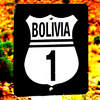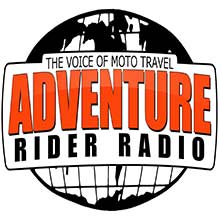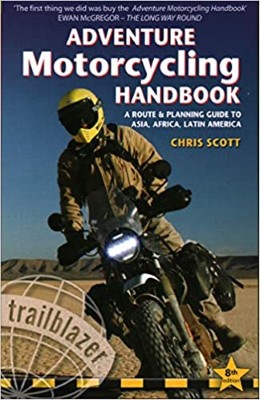 8Likes 8Likes
-
 1
Post By Snakeboy
1
Post By Snakeboy
-
 1
Post By reggie3cl
1
Post By reggie3cl
-
 2
Post By markharf
2
Post By markharf
-
 1
Post By reggie3cl
1
Post By reggie3cl
-
 3
Post By Peter Bodtke
3
Post By Peter Bodtke
 |

14 May 2024
|
|
Registered Users
Veteran HUBBer
|
|
Join Date: Sep 2002
Location: london,england
Posts: 191
|
|
|
Fuel availability & quality??
Hi. I am in the process of prepping for a south america trip on x ktm 890 adventure and have a couple of fuel questions: What sort of range should i be looking at? Not sure on our route yet, but it would be nice to have an idea of where/what the biggest milages are. Also, the bike has a catalytic converter - does anyone have experience of how these are affected by S.A. fuel? Cheers in advance.
Karl.
|

15 May 2024
|
|
Registered Users
Veteran HUBBer
|
|
Join Date: Oct 2017
Location: Colombia,(when not travelling)
Posts: 384
|
|
|
IN terms of range our experience is that the longest distances between fuel availability are in Southwestern Bolivia, crossing the desert - 600 km or so, and in Argentina Patagonia, where there are fuel stations every 200-330 km BUT they often don't have fuel...
The only country with really poor quality fuel is Venezuela.
|

15 May 2024
|
|
Registered Users
Veteran HUBBer
|
|
Join Date: Jul 2017
Location: Neiva Colombia
Posts: 257
|
|
|
catalytic
Your bike will make plenty of power without remapping , there are many local people driving your bike with the fuel available in SA The only bad place I have seen shite fuel is in the Guajira Colombia ,No Hay Extra it borders Venezuela and there is no quality control for what is sold.
Get ready to abuse your baby your going to South America
|

16 May 2024
|
 |
Registered Users
Veteran HUBBer
|
|
Join Date: Dec 2012
Location: Back into the hamster wheel again, in Oslo - Norway. Did a 5 year RTW trip/250 k kms, 2014-2019
Posts: 1,560
|
|
|
The socalled Lagunas route through highland desert in Bolivia is around 450 kms from Uyuni to San Pedro de Atacama. But there is actually as gas station in San Cristobal around 90 kms out of Uyuni so the stretch from there to San Pedro de Atacama is approx 360 kms depending what actual route you end up doing through the Lagunas area. But of course at that route you will ride in 1th and 2th and 3th gear a lot and fuel milage wont be good.
Also as mentioned above - south in Patagonia gas stations is often out of fuel - so always fill up where its possible.
Also in Brasil at the R319 Transamazonia there are some long stretches inbetween gas stations.
So what range is needed? Well it depends, where you plan to ride. Very few ride the Transamazonia, not so many do the Lagunas route. The best answer is the longer range you have the better it is. I wouldnt go anywhere unless I had a good 400 km/250 mile range.
Fuel quality - only place with low quality fuel that I encountered was Bolivia. They sell only 85 octane RON (used in Europe and most of the world) which is around 81 octane AKI (used in Usa etc). Even riding a bike with relatively liw compression one felt this, and one had to be a bit careful with the throttle.
I also experienced low fuel milage in Brasil - they seem to put a lot of «other stuff» in their petrol. Didnt hurt the engine though….
Didnt go to Venezuela so cannot say anything about fuel there.
__________________
In the end everything will be fine. If its not fine its not the end....
|

16 May 2024
|
|
Registered Users
Veteran HUBBer
|
|
Join Date: Jan 2008
Location: Inverness, Scotland
Posts: 257
|
|
|
My bike really struggled with low octane 'Corriente' fuel in Bolivia, Peru and Colombia (R1100GS with a John Gemi chip) A modern bike might be able to cope (maybe mine would have with the BMW chip in the ECU) but on corriente it pinked like hell and conked out a couple of times when the engine got really hot. This did not happen using 'Extra' which is a higher octane.
Extra is generally easier to get near large towns. I don't think any fuel there has lead in it so your cat should be fine.
I would definitely carry a fuel bladder and use iOverlander to try to plan for fuel stops - we got pretty lucky with fuel in Bolivia late last year/earlier this year (a perennial pain in the arse) but others have struggled. Never leave a town with fuel without filling up!
__________________
Our FB page:OneWorld2Up 
|

16 May 2024
|
|
Super Moderator
Veteran HUBBer
|
|
Join Date: Jul 2007
Location: Bellingham, WA, USA
Posts: 4,033
|
|
|
I bought a fuel can somewhere along the way--probably in Bolivia, but I don't really remember. Used it twice: once crossing the Andes between Chile and Argentina, once after a long battle with ridiculous headwinds in Patagonia. There were one or two other times when I was relieved to have a bit of extra fuel when I encountered unexpected detours, miscalculations, and closed fuel stations.
My point is not to tell you what you'll need or where you'll need it: only that if wandering even minor bits off the beaten track you'll probably be glad for a longer range sooner or later. Most of the time, my fuel can stayed empty because why bother? I normally have a 250 mile/400 km range, so draw your own conclusions about what you'll need.
Aside: in those Patagonian winds I discovered to my dismay how difficult it is to pour gasoline in a 60mph/100kph crosswind. Next time I'd carry a better spout, not just a funnel.
Lower octane gas is normally sold at higher altitudes, even here in the USA. This is not mysterious, and there are good reasons for it. My non-fuel injected bike kept chugging along up to around 15,000 feet, although with reduced power (duh). I had the most trouble with Brazilian fuel, which has a high percentage of alcohol. YMMV, but my worst fuel experiences have been in the EU (badly contaminated fuel along the Poland/Slovakia border) and Central America (presumed water contamination somewhere in Nicaragua). There's a lot of luck-of-the-draw involved.
I don't know where in the world you'll find leaded fuel these days, but it's not something I've worried about for quite a number of years--anywhere.
Hope that's helpful.
Mark
|

16 May 2024
|
 |
Contributing Member
Veteran HUBBer
|
|
Join Date: Jul 2005
Location: Wirral, England.
Posts: 5,680
|
|
|
Fuel absoltely everywhere. No problems with a 200 mile range tank.
Bolivia can occasionally be tricky but you'll always get some, somewhere.
__________________
Did some trips.
Rode some bikes.
Fix them for a living.
Can't say anymore.
|

18 May 2024
|
|
Registered Users
Veteran HUBBer
|
|
Join Date: Jan 2008
Location: Inverness, Scotland
Posts: 257
|
|
|
Fuel not absoutely everywhere. Shortages happen all over, and unpredictably. The day before we crossed into Argentina over the Paso de Jama in November last year there were severe shortages due to problems with imports. Guys on bikes coming down to SPdA were having to beg for fuel from other vehicles as the stations at Pastos Chicos, the border post and others were out. We used our bladder, Pastos was still out but the border had taken a delivery. We got pretty lucky in Bolivia only refused a couple of times, but anyone who has travelled there is likely to have been refused at some point. I wouldn't say you need to carry fuel all the time, but you should have the option.
__________________
Our FB page:OneWorld2Up 
|

18 May 2024
|
 |
Contributing Member
Veteran HUBBer
|
|
Join Date: Jul 2005
Location: Wirral, England.
Posts: 5,680
|
|
|
I was working guiding a large group from top to bottom only a few months ago. We had to fill 15 bikes !!
There is fuel everywhere. It's just not always available at every station.
You just sometimes need to go looking for it. If you're only visiting main fuel stations on highways then you will be disappointed. You can always get fuel somewhere from someone if you go looking or ask.
If the locals are driving their cars. There is fuel..
__________________
Did some trips.
Rode some bikes.
Fix them for a living.
Can't say anymore.
|

21 May 2024
|
 |
Gold Member
Veteran HUBBer
|
|
Join Date: Feb 2008
Location: Maplewood NJ USA
Posts: 601
|
|
Rode Peru, Brazil, Paraguay, Argentina, Chile, Bolivia, and back to Peru in 2023. 5-months, 30,000 km. My range was ~240 miles per tank, depending on headwinds and speed.
Reserve Gas Containers
A little south of Buenos Aires I found two 5-liter gas containers at a hardware store, with built-in pour spout. I bought two containers allowed for weight distribution options. One large container may have been more difficult to attach to the bike and manage the weight.
The cost of fancy gas blocks like a RotopaX Gasoline Pack or a fuel blatter seemed like an extravagant investment. I planned to sell the bike in Peru at the end of the trip. I certainly wasn't going to check gas containers in my luggage on my flight home!
Brazil BR-319 - Filled up before heading north and leaving Humaitá
- Topped off the tank at Ser. Realidade (190 km north of Humaitá)
- I picked up a few liters of overpriced gas from at a posada called Sítio Vale de Baca
- Lots of of gas stations in Careiro
The Ghost Road not so bad. There are gas stations near to south and north ends, and can probably buy gas out of a barrel at a restaurant, from a farmer, or lodge if needed. For peace of mind, have a spare gas container.
Argentina
In late October 2023, there was a fuel shortage while I was in Buenos Aires, but it was resolved before I left town. Yes, there are long stretches without gas in Southern Argentina. Don't count on a dot on the map having a gas station. If you see a gas station, fill it up. I used the spare gas a few times.
The only place I have ever gotten bad gas in Latin America was from the single gas station in Puerto Pirámides, on the Valdes Penisula. The bike would sputter at high speed...
The big gas station chains (ex. YPF and Axion) accept credit cards.
Bolivia
Gas is always a problem in Bolivia. Sometimes the gas just isn't available. I am in touch with riders currently in Bolivia (May 2024) and getting gas is a headache. Some gas stations aren't allowed to sell to tourists. Those that will sell gas to tourists charge "extra". What is happening, gas is subsidized for Bolivians and tours pay the unsubsidized price.
We were striking out again and again south of La Paz. My Colombian riding partner was searching for a local that would agree to fill our gas containers at a "Bolivian only" gas station, when I was approached and asked if I wanted to buy gas. Absolutely! We purchased 10 liters at gun-to-the-head prices (~3 times the tourist price.) My Colombian friend negotiated a better price than was initially offered to gringo me. We got enough gas to get to Peru, the gas was plentiful and the attendants are friendly. Don't let the cost of adventure get in the way of a good time.
At high altitude in Bolivia, my fuel-injected Honda XRE was a bit sluggish, but keep on rolling. If your bike has a manual carburetor, learn to adjust the needles as you rise and drop dramatically in attitude. Don't ask me for details, I have always ridden bikes with fuel injection.
__________________
Peter B
2008/09 - NJ to Costa Rica and back to NJ
2012/13 - NJ to Northern Argentina, Jamaica, Cuba and back to NJ
2023 - Peru, Brazil, Paraguay, Argentina, Chile, Bolivia...back to Peru.
Blogs: Peter's Ride
Last edited by Peter Bodtke; 29 May 2024 at 20:36.
Reason: typos and need to enter correct year
|

21 May 2024
|
|
Registered Users
Veteran HUBBer
|
|
Join Date: Sep 2002
Location: london,england
Posts: 191
|
|
|
Thanks folks for all your replies. I’ve had plenty of experience riding through africa to appreciate the necessity of carrying spare fuel and also the effects of poor fuel/terrain on mpg. It’s good to know the possible tricky areas so i can plan accordingly.
Thanks again,
Karl.
|

8 Sep 2024
|
|
Registered Users
HUBB regular
|
|
Join Date: Oct 2005
Location: France normandie
Posts: 22
|
|
|
I travelled along the Panamericana in 2024 south/central/north america with my 890 Adv ( EU - France ), 40000 km.
I had to use my additional jerrican only at the Chile / Bolivia border Tambo-Quemado , no gasoline, diesel only.
I refueled often ( before 150 km ) to prevent situations of gasoline temporary unavailability at gas stations.
I went short of gazoline near Santiago de Chile due to … left side tank tap in close position by KTM service shop in France ! I used my additional jerrican to get out of the tricky situation !
The KTM 890 Adventure fuel gauge is not reliable, i monitor the fuel status from the daily travel mileage indicator.
I used octane additive in south america strating from Peru depending of octane index gasoline availability.
On the KTM i located the 1 Gallon jerrican on the leftside above the passenger foot rest.
__________________
✌️
KTM 890 Adventure
|

10 Sep 2024
|
|
Registered Users
Veteran HUBBer
|
|
Join Date: Oct 2017
Location: Colombia,(when not travelling)
Posts: 384
|
|
Quote:
Originally Posted by tohellnback

The only bad place I have seen shite fuel is in the Guajira Colombia ,No Hay Extra it borders Venezuela and there is no quality control for what is sold.
|
It's probably Venezuelan fuel...
|
|
Currently Active Users Viewing This Thread: 1 (0 Registered Users and/or Members and 1 guests)
|
|
|
 Posting Rules
Posting Rules
|
You may not post new threads
You may not post replies
You may not post attachments
You may not edit your posts
HTML code is Off
|
|
|
|

Check the RAW segments; Grant, your HU host is on every month!
Episodes below to listen to while you, err, pretend to do something or other...

2020 Edition of Chris Scott's Adventure Motorcycling Handbook.
"Ultimate global guide for red-blooded bikers planning overseas exploration. Covers choice & preparation of best bike, shipping overseas, baggage design, riding techniques, travel health, visas, documentation, safety and useful addresses." Recommended. (Grant)

Led by special operations veterans, Stanford Medicine affiliated physicians, paramedics and other travel experts, Ripcord is perfect for adventure seekers, climbers, skiers, sports enthusiasts, hunters, international travelers, humanitarian efforts, expeditions and more.
Ripcord Rescue Travel Insurance™ combines into a single integrated program the best evacuation and rescue with the premier travel insurance coverages designed for adventurers and travel is covered on motorcycles of all sizes.
(ONLY US RESIDENTS and currently has a limit of 60 days.)
Ripcord Evacuation Insurance is available for ALL nationalities.
What others say about HU...
"This site is the BIBLE for international bike travelers." Greg, Australia
"Thank you! The web site, The travels, The insight, The inspiration, Everything, just thanks." Colin, UK
"My friend and I are planning a trip from Singapore to England... We found (the HU) site invaluable as an aid to planning and have based a lot of our purchases (bikes, riding gear, etc.) on what we have learned from this site." Phil, Australia
"I for one always had an adventurous spirit, but you and Susan lit the fire for my trip and I'll be forever grateful for what you two do to inspire others to just do it." Brent, USA
"Your website is a mecca of valuable information and the (video) series is informative, entertaining, and inspiring!" Jennifer, Canada
"Your worldwide organisation and events are the Go To places to for all serious touring and aspiring touring bikers." Trevor, South Africa
"This is the answer to all my questions." Haydn, Australia
"Keep going the excellent work you are doing for Horizons Unlimited - I love it!" Thomas, Germany
Lots more comments here!

Every book a diary
Every chapter a day
Every day a journey
Refreshingly honest and compelling tales: the hights and lows of a life on the road. Solo, unsupported, budget journeys of discovery.
Authentic, engaging and evocative travel memoirs, overland, around the world and through life.
All 8 books available from the author or as eBooks and audio books
Back Road Map Books and Backroad GPS Maps for all of Canada - a must have!
New to Horizons Unlimited?
New to motorcycle travelling? New to the HU site? Confused? Too many options? It's really very simple - just 4 easy steps!
Horizons Unlimited was founded in 1997 by Grant and Susan Johnson following their journey around the world on a BMW R80G/S.
 Read more about Grant & Susan's story
Read more about Grant & Susan's story
Membership - help keep us going!
Horizons Unlimited is not a big multi-national company, just two people who love motorcycle travel and have grown what started as a hobby in 1997 into a full time job (usually 8-10 hours per day and 7 days a week) and a labour of love. To keep it going and a roof over our heads, we run events all over the world with the help of volunteers; we sell inspirational and informative DVDs; we have a few selected advertisers; and we make a small amount from memberships.
You don't have to be a Member to come to an HU meeting, access the website, or ask questions on the HUBB. What you get for your membership contribution is our sincere gratitude, good karma and knowing that you're helping to keep the motorcycle travel dream alive. Contributing Members and Gold Members do get additional features on the HUBB. Here's a list of all the Member benefits on the HUBB.
|
|
|
 8Likes
8Likes
 8Likes
8Likes